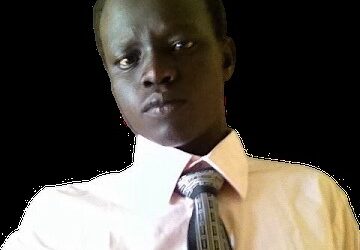By James Aniceto Batikayo
Recent media highlights of the World Bank report on national resource sectors, particularly: Fishery, Forestry, Game and Tourism in South Sudan, have been very interesting and exciting.
Many people wish that those reports could have covered a wider range of such resources that have remained untapped over the years. The hectic and desperate drive of the country to stability and prosperity due to violent skirmishes in the rural areas and lack of competence and expertise have fallen short of attracting investment and business capital to the country.
Yes! Not less than $300 million dollars every year could be the income accruing from Fish Catch alone, as assessed by the World Bank. In fact citizens have been surprised and confused about that information. However, to realize that, needs vital technological intervention as suggested by the report, besides an improved state of stability and normalcy in the resource areas.
It is good to know from the World Bank report that South Sudan has the oldest Teak Plantation in the entire African Continent. Indeed that is true; driving a vehicle through some trunk roads across the Teak Plantation in Western Equatoria State, in particular, may expose the vehicle riders to sudden tree fall that might block the driveway or break the body structure of a car or even cause some human fatality. People living around those areas are tired and sick of those trees and are publically calling for their clearance. The Sudan Railways have used planks produced at a large sawmill in Ketere Payam of South Sudan, to support its train railways extensions to South Sudan, Western and Northern Sudan several years ago in the Old Sudan. These train railways have remained up today dependent on the Ketere sown wood but that is now history. It was the British Colonialist who had established giant sawmills at that place for producing train railway planks and for constructing semi-permanent houses.
A commander of SPLA was once talking to some of us, after the Comprehensive Peace Agreement (CPA) 2005, that he was moving with his forces from the direction of the areas of Torit the capital of Eastern Equatoria State towards the Jonglei and Unity States. To their surprise, he and his troops realized that throughout their forest journey, they were seeing trees known as Akashi trees full of Game Arabic on their branches. They had no plan as to what to do with that situation. The SPLA commander said he and his men then prayed God that once South Sudan gets Independence, they would come to collect and add those Equatoria forests Game to what is in the Rank of Northern Upper Nile and South Sudan would then be the biggest exporter of this commodity in the whole world. This is true in fact but unfortunately, it has not happened as yet but it will obliviously happen one day.
Forests in South Sudan have more to give us and to enrich us. There is natural Haney produced in Western Equatoria State as stated in the World Bank report but it has always been hard to market locally or outside the country. The World Bank has not gone further in its report beyond Honey. Late Archbishop Joseph Gassi of Tombura and Yambio Catholic Church once told a group of us, who called ourselves intellectuals, that the Beeswax that the honey producers throw out as waste is more lucrative than the honey itself in the outside world. Why? It is because of its use in the Automobile Industry, particularly its use for fixing Windscreens to vehicles. For sure, very many people do not know this fact in our great country. In addition to that, there is an abundance of a substance known as Rubber which can be stretched and it does not allow liquids to pass through. It is available in Western Equatoria State. Some of us came to know this when realizing that bicycle riders do not use the pasting material from Europe for repairing the punctures of their bicycle tyres, instead, they punch a particular tree and it oozes a liquid material with which they use to seal the punctures in their bicycle tyres. If any person squeezes this material in his or her palm, the material becomes like a pink punk ball. There is also a tree Known locally as Palm Tree. The fruit of this tree produces two types of edible oil. The first is from the cover of the fruit and the second is from the carnal of the fruit which is better than the former. A German told a group of us, he could charter planes to collect the carnal oil from Anzara airport in Western Equatoria if we are ready to prepare it.
All information contained in the World Bank’s recent report is adequate and comprehensive. Unfortunately, the national Ministry concerned with Game and Tourism among others has kept Western Equatoria out of focus. It is surprising to learn that there is a wildlife species Known as “the Bongo” living in the forests of two countries in the world: South Sudan and Tanzania around Kilimanjaro Mountain. An American Journalist and Photographer told us some years ago that he was going to make millions of US Dollars only from the video and photos of that animal. Why? Because it is a gazelle like any other but the difference is that the horns of the Bongo are like a small Tree on the head. Watchers of the American CNN T.V can see that animal which we are talking about now in its snap T.V shows. It is said the most marvellous with this species is its walking or movement which is like a musical dance. I am not sure the latest Truism managers in the country know of this beautiful animal around the areas of Ezo Payam in Western Equatoria State.
Recent visits of a German Delegation to South Sudan and the delegation’s travel to Eastern Equatoria opened another important avenue to the untapped resources in our country which is in agriculture. Upon the Addis Ababa Peace Agreement of 1972, the ‘Anynya’ civil war that broke out in 1955 ended. There was relative calm and stability across South Sudan. This led to the production of several ‘export cash crops in the country. Crops such as: Coffee the Arabica Type, Tea, Tobacco, High-land Rice grown in Western Equatoria, other Rice ground in water in Aweil of Northern Bahr Al Gazalle. There are also fruits of big sizes that include Indian big mangos, Jamaican long-size bananas, Pineapple of the Cayenne type weighing up to 4 or 5 kilos and found only in two countries: South Sudan and the United States of America in Hawaii State and the list is long.
With the recent visit of the President to United Arab Emirates this month and the outcome of the 7days long visit focusing on agriculture, and other vital areas of investment, more untapped resource items will be unlocked to the highest benefit of our newborn nation. God Bless.
By: James Aniceto Batikayo
JUBA – South Sudan.




